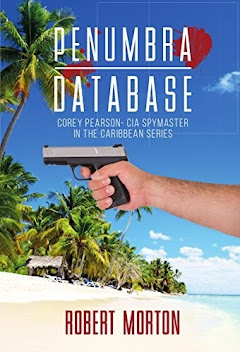 |
| Under heavy fire, CIA SAC commandos execute a daring rescue, extracting a hostage Philip Walton from terrorist captivity in the dead of night |
It happens more often than we’d like to
think. One minute, someone’s going about their life—working, traveling, just
living—and the next, they’re grabbed by ruthless kidnappers who see them as
nothing more than a payday or a bargaining chip. When that happens, the U.S.
government has two options: negotiate or take action.
That was the reality in October 2020 when
27-year-old Philip Walton was taken from his farm in Niger and smuggled across
the border into Nigeria. His kidnappers, likely connected to Al-Qaeda or ISIS
affiliates, weren’t planning to keep him. They were looking to sell him off to
an even more dangerous terrorist group, and once that happened, Walton would
vanish into the shadows—no rescue, no second chance. Time was already running
out.
But behind the scenes, deep in the
classified world of the CIA, another plan was already in motion. The agency’s
Special Activities Center (SAC/SOG)—the shadowy unit that handles the kind of
missions no one talks about—was teaming up with SEAL Team 6 to pull off a
rescue that, if it failed, would officially “never happen.” Intelligence
operatives were glued to satellite feeds, tapping calls, and working their
informants, slowly piecing together a trail that led to a remote compound in
northern Nigeria. This wasn’t the kind of mission where you got do-overs—there
were no reinforcements coming, no press conferences if things went sideways. It
had to be perfect.
If this sounds like something out of a spy
thriller, that’s because it is. It’s the kind of scenario Corey Pearson and his
CIA sleeper cell faced in Silent
Heroes, when six Americans were abducted by
ruthless FARC rebels deep in the Colombian jungle. Just like Walton’s
kidnappers, the FARC captors in Silent Heroes had no intention of
letting their hostages go free. The only thing standing between them and a
tragic fate was a team of operatives skilled in deception, espionage, and
lethal precision. For both Pearson’s team and the real-life SAC/SOG operatives
hunting for Walton, failure wasn’t just unacceptable—it was never an option.
Once
they had Walton’s exact location, it was go-time. The mission had reached its
most dangerous phase: the rescue. Under the cover of darkness, SEAL Team 6 and
CIA paramilitary officers parachuted into the area using a high-altitude,
low-opening (HALO) jump. They landed miles away, completely undetected, and
began the slow, stealthy approach. Night vision goggles on, weapons suppressed,
they crept in, surrounding the compound. There would be no warning, no
negotiation. The captors wouldn’t even know what hit them.
Then, in an instant, chaos erupted.
Gunfire shattered the silence as the team moved with lethal precision, dropping
six of the seven kidnappers before they had a chance to fight back. The last
guy tried to run but was caught—maybe he’d be useful for intel later. And just
like that, they found Walton. He was alive, shaken, but unharmed. Within
minutes, helicopters swooped in, scooping up the team and their target before
anyone could even think about retaliation.
The whole thing—parachuting in, taking
down the captors, getting out—only took a few hours. The next day, the Pentagon
would release a short statement, just enough for the public to know the rescue
had happened. But the names of the operatives, the intelligence that made it
possible, and the methods they used? That would stay in the shadows, right
where it belonged.
These kinds of missions might sound like
something straight out of an action movie or a thriller like Silent Heroes,
but they’re very real. They happen more often than we realize, and the victims?
They’re not just faceless names on the news. They’re aid workers, teachers,
journalists—regular people who just happened to be in the wrong place at the
wrong time. It’s easy to assume that hostage situations only happen to “other
people” in far-off places, but what if it was your brother? Your best friend?
What if, on some unlucky day, it was you?
For the CIA’s paramilitary officers, these
missions aren’t just rare, high-stakes operations—they’re part of a shadow war
that never really ends. Most people will never hear about them, never know
their names, and never realize just how many lives they’ve saved. They slip
into foreign countries unnoticed, blend into cultures that aren’t their own,
and gather intelligence in places where exposure means death. When the time
comes, they move in fast, take out the threats, and disappear just as quickly.
It doesn’t matter if it’s the deserts of
Africa, the mountains of Afghanistan, or the backstreets of some hostile
city—the job is always the same. Find the target. Strike before the enemy knows
what’s coming. Get out before anyone realizes they were there. The rescue of
Philip Walton was just one mission among countless others, most of which will
never make the news.
It’s the same kind of high-stakes, covert
world depicted in Silent
Heroes, where CIA operative Corey Pearson navigates dangerous
territory, working in the shadows to bring Americans home. And make no
mistake—while the world goes about its business, these real-life operatives are
out there, unseen and unheard, risking everything to keep Americans safe.
Robert Morton is a member of the Association of Former Intelligence Officers (AFIO) and an accomplished author. He writes the Corey Pearson- CIA Spymaster Short Story, blending his knowledge of real-life intelligence operations with gripping fictional storytelling. His work offers readers an insider’s glimpse into the world of espionage, inspired by the complexities and high-stakes realities of the intelligence community.





No comments:
Post a Comment